Canon’s 5D Mark II and 7D Depth of Field: Is Less Always More?
HD capable DSLRs seem to be everywhere these days, with projects ranging from low-budget feature films to primetime network television programs taking advantage of the cameras. They offer HD imaging with cinematic 35mm depth of field in a tiny package at a bargain-basement price. What's not to love?
As an HD DSLR owner myself, I will be talking a lot about these cameras on this blog, but in this post I would like to focus (no pun intended) on that cinematic depth of field. After all, this is really what sets these cameras apart from pretty much any other HD camera even remotely in the same price range.
There seems to be a lot of confusion about the term "full frame sensor". I would like to try to clarify this concept, specifically in terms of how it relates to what are no doubt the two most popular HD DSLRs, the Canon 5D Mark II and the Canon 7D.
Many people prefer the 5D Mark II to the 7D because of its full frame sensor, but just what does that mean? It means that the sensor is the same size as a full frame of 35mm film, right? Well, yes and no. It's important to understand the difference between 35mm still film and 35mm motion picture film. The full frame that is referred to in this case is a frame of 35mm still film, which is not the same size as a frame of 35mm motion picture film. Take a look at the image below:
On the left is some 35mm motion picture film, and on the right is some 35mm still film. They do look pretty similar, and they are both 35mm from edge to edge, but they are not the same. For instance, you may notice that the sprocket holes are shaped differently. And there is another difference that should be clear to you right off the bat, and that should make sense when you compare the respective shapes of the cameras they are designed for:
That is, the motion picture film is vertical, and the still film is horizontal. This means that in the case of the motion picture film, 35mm refers to the width of the film, and in stills world it refers to the height of the film. In the image below, you can see the relative size of a full frame of 35mm still film and the size of the 5D Mark II's HD frame.
And just how big is a frame of 35mm motion picture film? That's a little bit harder to say. Many different size frames are used for various aspect ratios and release formats, as you can see from the image below. While the Canon 7D's HD frame size might not match any one of them exactly, you can see that it comes close enough to any number of them to be called a 35mm motion picture or Super 35 sized sensor.
Most people working with these cameras understand that the depth of field of a given format is inversely proportional to the size of the imager (film frame or digital sensor) used to record it. In other words, the bigger the sensor, the less (or shallower) the depth of field, and the smaller the sensor, the greater the depth of field. (I will explain why this is in a future post, as this is another often-misunderstood concept.) Traditionally, digital video cameras have had very small sensors, which meant video images with seemingly infinite depth of field -- everything seemed to be in focus. HD DSLRs have finally brought large sensors, and with them cinematic depth of field, to users who can't afford to shoot their projects on 35mm film.
But which of these cameras have "35mm depth of field"? Well, it depends if you are referring to 35mm motion picture depth of field or 35mm stills depth of field. As shown in the diagrams above, the 5D Mark II, with its much larger "full frame sensor" has much shallower depth of field than the 7D, but it is not the depth of field you are used to seeing in movies shot on 35mm film -- it is, in fact, much shallower than that. There actually is a motion picture format that is shot on horizontal 35mm film. It's called VistaVision, and was used in the 1950s and '60s. It is occasionally still used for effects work, and the cameras look like this:
However, back when VistaVision was used to shoot entire movies, super-shallow depth of field was not really the primary goal, as you can see from this frame of a famous scene from the VistaVision film "North by Northwest":
For more examples of the deep-focus VistaVision photography on that film, click here. The shallow depth of field craze came about much later, I think partly as a reaction to the deep depth of field that has come to be associated with the look of video. In any case, while there are plenty of movies shot on film that do use shallow depth of field to excellent effect, none of them were shot with a frame size anywhere close to the size of the 5D Mark II's "full frame" sensor. They were in fact shot with a frame size very close to that of the 7D's "Super 35" size sensor.
Does that make one camera or the other better for filmmaking purposes? Not necessarily. It is, of course, subjective, and many people do prefer the super-shallow depth of field of the 5D Mark II. However, the 5D Mark II does have a very specific unique look to it, and when I see something shot on that camera, I know right away. There's nothing else it could have been shot on. I feel the 7D, with it's Super 35 depth of field, looks much closer to the images we are used to seeing at the theater. I think that well-shot 7D footage can more easily be mistaken for footage that was shot on 35mm, the Red One, or other Super 35 digital cinema cameras. For that reason, for most projects that simply want to emulate the look of film for very little money, I do tend to prefer the 7D over the 5D Mark II. I suspect that some of the bigger budget projects that are using the 5D Mark II, like "House," are not using it for that reason, but rather to take advantage of the unique look of that camera's super-shallow depth of field, and in that case, the 5D Mark II is definitely the way to go.
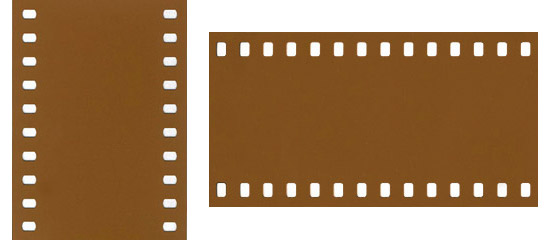

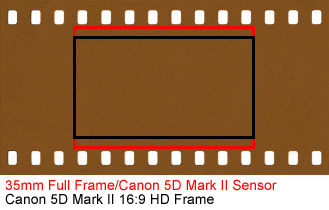
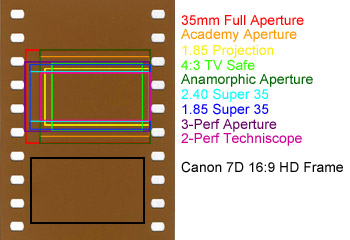
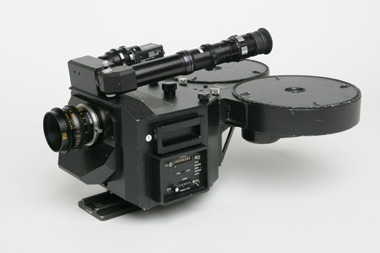
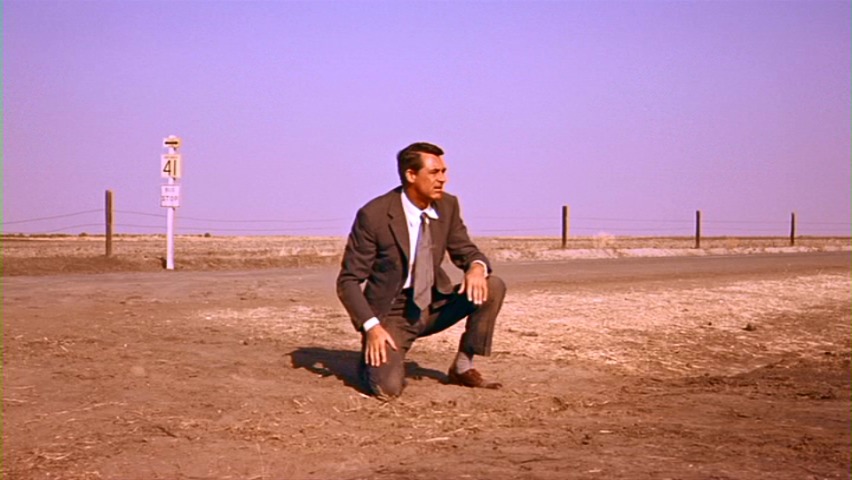
August 5th, 2010 - 02:55
Great blog…. keep it up..bookmark created!
J
September 27th, 2010 - 23:08
wow. So much info but so logical. Thx alot
September 29th, 2010 - 00:15
I must say the extra light sensitivity of the 5d I envy, but this article makes me psychologically appreciate my t2i more, so thanks
September 29th, 2010 - 06:50
WOW indeed. Thanks for that explanation. Totally useful as I’ve got a few people asking me for advice – what they think I know about shooting video beats me – and now i can sound like I do know a thing or two.
September 29th, 2010 - 21:08
Torben,
Light sensitivity is all relative. The 5d may be more light sensitive than the 7d or t2i at a given ISO, but not necessarily if you want to achieve the same depth of field. For instance, if you are shooting with a 5d and want to match the 7d’s depth of field characteristics (either because you think it looks more “like film” or because you want to give your focus puller a better chance of actually getting your image sharp, etc), you would have to stop down an extra stop and a half to do so. For example, if you had a 5d and wanted to match a 7d shot that was shot with a 50mm lens at 2.8, you would have to shoot it with an 80mm lens to give you the same field of view, and then stop down to about a 4/5.6 to match the depth of field. Given that you have the same amount of light for each shot, to give the 5d shot the same exposure as the 7d shot you would need to adjust the ISO accordingly. If the 7d shot was shot at ISO 400, that would mean that the 5d shot would need to be shot around ISO 1000 or ISO 1250 to maintain the same exposure. The 5d may be marginally better in low light than the 7d or t2i if they are shooting at the same ISO, but is it better at ISO 1250 than the 7d or t2i is at ISO 400? Given that I like the look of the 35mm motion picture depth of field, I find that the 7d actually gives me a low light advantage over the 5d by allowing me to achieve the depth of field I like with my lenses wide open, rather than having to stop down on my lenses and shoot an a higher ISO with an unacceptable level of noise.
-Josh
October 16th, 2010 - 20:16
So would you recommend the 7d over the 5d for someone who likes a deeper depth of field?
October 17th, 2010 - 12:05
William,
Yes, deep depth of field is more easily achieved on the 7d than the 5d due to its smaller sensor. However, if you really want deep depth of field, you might as well go with a more traditional prosumer HD camera such as a Sony EX-1 or a Panasonic HVX200, since their sensors are much smaller than those of any of the DSLRs. The whole revolutionary thing about the DSLRs is the ability to have a shallow depth of field. I personally think that the 7d’s “Super 35″ sized sensor is a good happy medium between the infinite depth of field of traditional video cameras and the super-shallow depth of field of the full-frame 5d. It gives you plenty of room to get the background out of focus to isolate your subject, but it also gives the focus-puller a chance of actually getting your subject in focus. Some 5d shooters like to shoot at a deeper stop (4-5.6 or so) in order to get a usable depth of field with that camera, but if you’re going to do that anyway, why not get the same depth of field with the 7d at a 2.8, and be able to shoot with 1/2 or 1/4 the amount of light?
-Josh
October 18th, 2010 - 16:12
Thanks Josh. I do want to achieve shallow DOF but I’m not particularly smitten with the real razor thin variety that I’m seeing a lot of people do with the 5D so I just wanted to make sure I wasn’t going to be stuck with that. Sounds like the 7D might be the way to go now. Sure is tough to choose…
December 16th, 2010 - 20:46
Hey Josh, great explanation that even I could follow!
thanks!
Sanae
December 16th, 2010 - 23:14
No problem, Sanae
February 25th, 2011 - 12:41
hello josh..great article. now i do have a query. suppose u have to make a movie (for theatrical release in cinemascope) in shoe string budget(which means u cannot use 35mm movie camera, or red), and if i ask u to choose a camera of JVC, or Panasonic or canon d5 M2..which one will u choose ? another question is i m toying with the idea of buying D5 M2 for movie shooting purpose, will the get the desired result of usual 35mm projection in theater
March 1st, 2011 - 09:15
I don’t think any of those cameras (or any digital camera) will give you the result of 35mm film. If you can’t afford to rent the Red, Alexa, or other proper digital cinema camera, my choice would be the Canon 7d. It has the same depth of field as 35mm motion picture film, unlike the 5d Mark II. However, due to its heavy compression, I really don’t think its footage is suitable for the big screen. I would highly recommend that you at least try to shoot on the Red if you have some reason to believe the film will be released theatrically.
-Josh
April 1st, 2011 - 20:04
Today I realised the difference between the 35mm film support and the 35mm photography support. Anyway, I would like to ask you something: does the DOF depends by the distance between the film (or sensor) and the center of the lens? If the answer is yes there is no difference between 5d and 7d DOF (or 550d, or60d) because they all have the sensor at the same distance from the lens. That is the reason why when you put a 50mm lens on your APS-C sensor (7d, 550d, 60d format) it works like an 80mm, because the sensor is at the same distance than those in 35mm cameras but it is smaller and get only part of the image.
I hope my english was understable (I’m writing from Italy). Waiting for answers, Nicolò.
April 2nd, 2011 - 10:32
The depth of field is determined by the size of the sensor. That is why the 5d has less than the 7d — its sensor is much larger.
-Josh
April 1st, 2011 - 20:34
Once I posted my comment I realised that the first sentence was not understable because of my strange english: in italian the word “film” means “movie”. I was talking about the difference between 35mm movie cameras and 35mm photographic camera.
Bye!
June 14th, 2011 - 23:38
Thanks for taking the time to teach us something so useful. Keep it up please
June 28th, 2011 - 08:47
Super helpful and engaging. Thank you. Further solidifies my preference for the 7D.